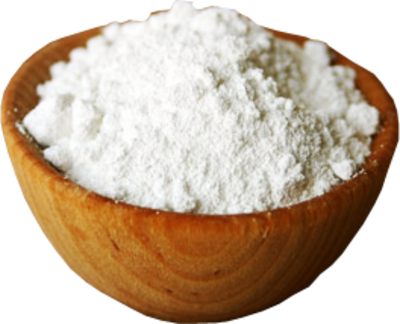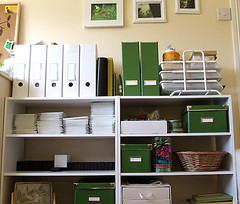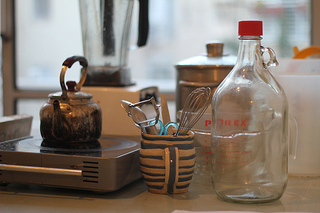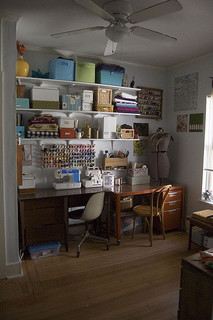Maintaining a tidy and organized home is not only essential for creating a pleasant living environment, but it also contributes significantly to your mental well-being and daily efficiency. An organized space can help reduce stress, increase productivity, and even improve your overall mood. However, traditional organizing methods often involve purchasing new storage solutions and cleaning products that can be harmful to the environment.
As awareness about environmental issues grows, more people are seeking ways to adopt sustainable practices in all aspects of their lives, including home organization. Organizing your home in a green and eco-friendly way ensures that you are not only creating a neat and functional space but also contributing positively to the planet. By choosing sustainable materials, repurposing existing items, and incorporating natural cleaning methods, you can achieve an organized home that aligns with your values.
Today we will walk you through practical tips and tricks for organizing your home sustainably. We’ll cover everything from decluttering with a purpose to using eco-friendly storage solutions, adopting a minimalist mindset, and organizing room by room. By the end of this guide, you’ll have all the tools you need to create a clean, green, and well-organized home. Plus, we’ll challenge you to take action and share your progress, helping to inspire others to embrace eco-friendly organization methods.
So, whether you’re looking to overhaul your entire home or just tackle a specific area, read on for our top tips on how to organize your home in a way that’s both efficient and environmentally friendly. Let’s get started on transforming your living space into a haven of order and sustainability!
1. Declutter with a Purpose
- Sort and Assess: Go through your belongings and categorize them into keep, donate, recycle, and discard piles. Focus on keeping only what you truly need and use.
- Sustainable Disposal: Donate usable items to local charities or thrift stores. Recycle what you can and dispose of the rest responsibly.
- Repurpose and Upcycle: Use jars, boxes, and containers you already have instead of buying new ones. Glass jars can be great for pantry items, and old shoe boxes can be repurposed for organizing drawers.
- Sustainable Materials: If you need to buy storage solutions, opt for those made from sustainable materials like bamboo, recycled plastic, or natural fibers.
- Quality Over Quantity: Invest in high-quality, durable items that last longer and reduce the need for frequent replacements.
- Regular Reviews: Periodically review your belongings to keep clutter at bay. Seasonal decluttering can help you stay on top of things.
2. Organize Room by Room
Kitchen
- Pantry Organization: Use clear glass jars or recycled containers to store dry goods. Label them for easy identification.
- Drawer Dividers: Use wooden or bamboo dividers to keep utensils and tools organized.
- Compost Bin: Keep a small compost bin in the kitchen for food scraps, reducing waste and promoting sustainability.
Living Room
- Multi-functional Furniture: Use furniture that doubles as storage, like ottomans with compartments or coffee tables with shelves.
- Cable Management: Use eco-friendly cable organizers made from sustainable materials to keep cords tidy and out of sight.
- Declutter Surfaces: Keep surfaces like coffee tables and shelves clutter-free by storing items in baskets or decorative boxes.
Bedroom
- Closet Organization: Use wooden hangers and fabric bins to keep clothes and accessories organized. Donate or recycle clothes you no longer wear.
- Under-Bed Storage: Utilize the space under your bed for storing off-season clothing or extra linens in eco-friendly storage bags.
- Minimalist Décor: Keep your bedroom serene with minimal decorations. Opt for plants and natural elements to enhance the space.
Bathroom
- Natural Containers: Store toiletries in glass jars or bamboo containers. Use recycled glass bottles for liquid soap and shampoo.
- Towel Storage: Roll towels and store them in a wicker basket or on a wooden shelf to save space and add a touch of natural décor.
- Medicine Cabinet: Regularly check and dispose of expired medications responsibly. Use small bins or trays to keep products organized.
Home Office
- Paperless Solutions: Minimize paper clutter by going digital. Use cloud storage and digital note-taking apps.
- Sustainable Supplies: Choose eco-friendly office supplies like recycled paper, biodegradable pens, and refillable markers.
- Desk Organization: Use bamboo organizers or recycled containers to keep your desk tidy. Label drawers and folders for easy access.
3. Label Everything
- Consistent Labeling: Use a consistent labeling system to make it easier to find things. Consider using a label maker with recyclable label tape.
- Eco-Friendly Labels: Choose labels made from recycled paper or plant-based materials.
- Natural Cleaners: Use green cleaning products to maintain your organized space. Vinegar, baking soda, and lemon are great natural cleaners.
- Regular Maintenance: Set aside time each week for quick cleanups to prevent clutter from accumulating.
Organizing your home in an eco-friendly way not only helps you create a tidy and efficient space but also promotes sustainability and reduces your environmental footprint. By adopting these green organizing tips, you can enjoy a cleaner, more organized home while making a positive impact on the planet.
This week, take on the challenge to organize one area of your home. Choose a room or a specific space, such as your kitchen pantry, bedroom closet, or home office. Follow the tips outlined in this guide to declutter, organize, and incorporate eco-friendly practices. Let’s inspire each other to create more sustainable and organized homes!






